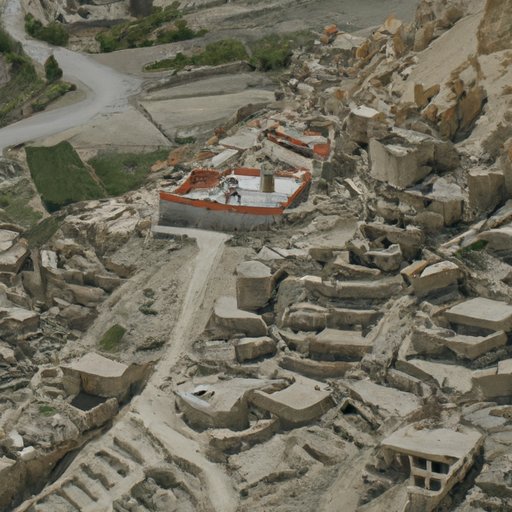Introduction
Cultural landscape is an important concept in AP Human Geography. It refers to the physical environment shaped by human activities, representing the interaction between humans and their environment. A cultural landscape combines both natural and human-made elements and can be seen as a reflection of a certain culture or society. This article seeks to explore the concept of cultural landscape in AP Human Geography, examining the role of culture in shaping landscapes, as well as investigating how human activity interacts with natural landscapes and its social and economic implications in different regions.
Exploring the Role of Culture in Shaping Landscapes
When looking at cultural landscapes, it is important to examine how human activity has shaped them. Humans have been altering the landscape for centuries through activities such as farming, building cities, and creating infrastructure. These activities have had a profound effect on the physical environment, creating landscapes that reflect the culture and society of the people who inhabit them.
In addition to these direct changes to the landscape, humans also shape the environment through their behaviors and beliefs. For example, a culture’s religious beliefs may influence the way they view the land and how they interact with it. Similarly, cultural values such as respect for nature can shape how people use and take care of the land.
It is also important to analyze cultural landscapes through a human geography lens. Human geographers study the interaction between humans and their environment, examining how humans shape and are shaped by their environment. By studying cultural landscapes, human geographers gain insights into the ways in which a culture interacts with its environment and how this interaction shapes the landscape.

Examining Cultural Landscapes in Different Regions
The study of cultural landscapes can provide insight into how different cultures interact with their environment. For example, in some regions, urbanization has led to the destruction of natural landscapes and the creation of artificial ones. In other areas, traditional practices such as farming and ranching have resulted in distinctive agricultural landscapes. In still other regions, cultural landscapes are shaped by the practices of indigenous peoples, such as the use of fire to manage vegetation.
It is also important to investigate how human activity interacts with natural landscapes. In some cases, humans have altered the landscape so drastically that the natural environment is barely recognizable. In other cases, human activity has been more subtle, resulting in landscapes that are a mix of natural and human-made features. Examining these interactions can provide insights into the effects of human activity on the environment.
Finally, it is important to consider the social and economic implications of cultural landscapes. For example, some landscapes may be seen as symbols of power and wealth, while others may be associated with poverty and oppression. Cultural landscapes can also be used to promote tourism or to attract investment, and in some cases, they can even be used to assert political control over a region.
Conclusion
Cultural landscape is an important concept in AP Human Geography. It refers to the physical environment shaped by human activities, representing the interaction between humans and their environment. This article has explored the concept of cultural landscape in AP Human Geography, examining the role of culture in shaping landscapes, as well as investigating how human activity interacts with natural landscapes and its social and economic implications in different regions.
By studying cultural landscapes, human geographers gain insights into the ways in which a culture interacts with its environment and how this interaction shapes the landscape. Additionally, examining how human activity interacts with natural landscapes can provide insights into the effects of human activity on the environment. Finally, cultural landscapes can also be used to promote tourism or to attract investment, and in some cases, they can even be used to assert political control over a region.
In conclusion, cultural landscapes are a valuable tool for understanding the relationship between humans and their environment. By studying cultural landscapes, we can gain insight into how different cultures interact with their environment and how these interactions shape the landscape. Moreover, examining the social and economic implications of cultural landscapes can help us understand the impacts of humans on their environment and the implications for society.
(Note: Is this article not meeting your expectations? Do you have knowledge or insights to share? Unlock new opportunities and expand your reach by joining our authors team. Click Registration to join us and share your expertise with our readers.)
